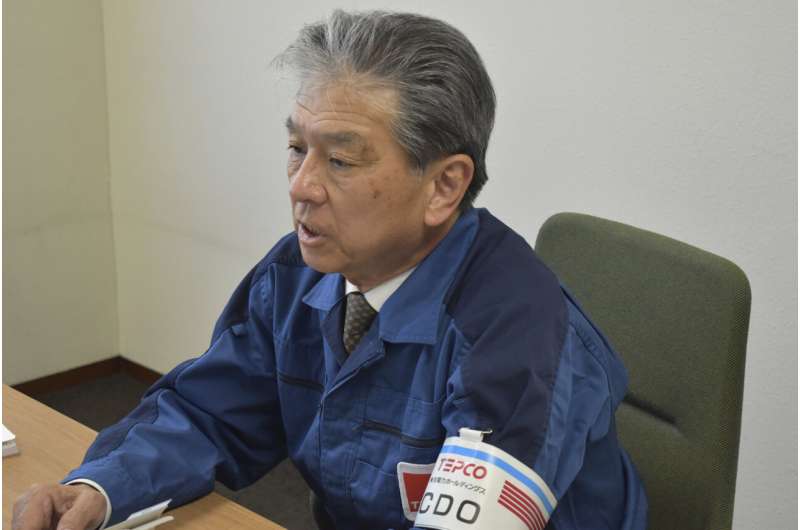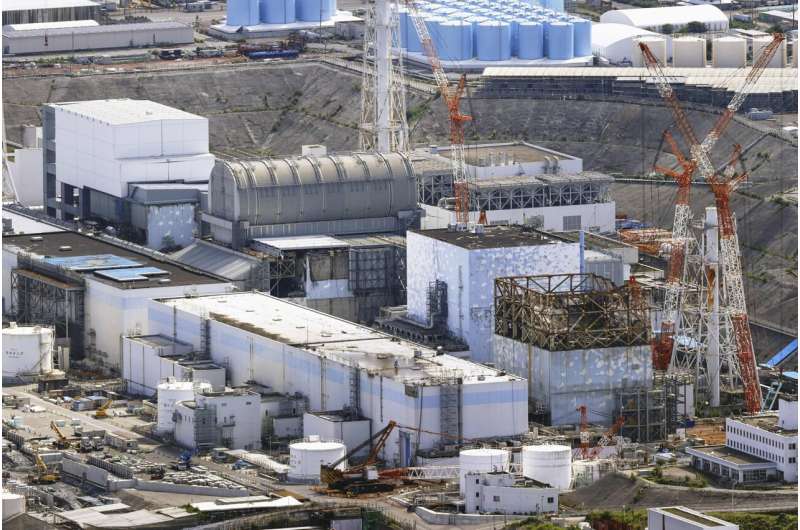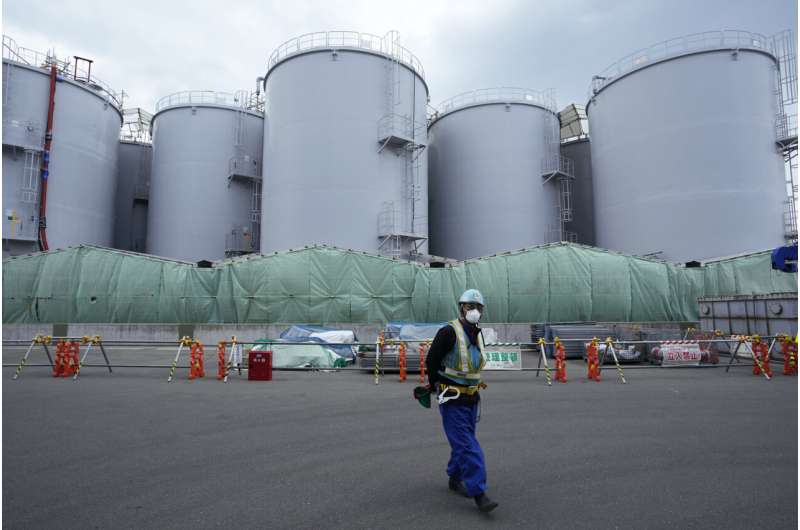This article has been reviewed according to Science X's editorial process and policies. Editors have highlighted the following attributes while ensuring the content's credibility:
fact-checked
reputable news agency
proofread
Fukushima plant head: Too early to predict decommissioning

The head of Japan's wrecked Fukushima nuclear plant says details of the damage inside its reactors are only beginning to be known 12 years after it was hit by a massive earthquake and tsunami, making it difficult to foresee when or how its decommissioning will be completed.
The most pressing immediate task is to safely start releasing large amounts of treated but still radioactive water from the plant into the sea, Akira Ono said in an interview with The Associated Press.
The March 2011 earthquake and tsunami damaged cooling systems at the Fukushima Daiichi plant, causing three reactors to melt and release large amounts of radiation. The operator, Tokyo Electric Power Company Holdings Inc., has been able to stabilize the plant to the point where the company can better plan a decommissioning strategy, expected to be lengthy and exceedingly challenging.
"Going forward, we have to face unconceivably difficult work such as retrieving the melted debris" from inside the reactors, said Ono, who heads the plant and is president of Fukushima Daiichi Decontamination & Decommissioning Engineering Co.
Earlier this year, a remote-controlled underwater vehicle successfully collected a tiny sample from inside one of the three melted reactors—only a spoonful of about 880 tons of highly radioactive melted fuel and other debris that must be safely removed and stored.
The status of the debris in the primary containment chambers of the Unit 1, 2 and 3 reactors remains largely unknown, Ono said.

Removal of melted debris is set to start in Unit 2 sometime after September this year following a nearly two-year delay. The removal of spent fuel in the Unit 1 reactor's cooling pool is set to begin in 2027 after a 10-year delay because of the need to dismantle parts of the building damaged by hydrogen explosions.
The plant should be ready for workers to finally concentrate on removing the melted debris from the reactors after all spent fuel is taken out of the cooling pools by 2031, Ono said.
The government is maintaining its original goal of completing the plant's decommissioning by 2051. But some experts say removing all of the melted fuel debris by then is impossible and suggest a Chernobyl-style entombment of the plant, an option that could help reduce health risks while the plant's radioactivity gradually decreases.
"I still consider this goal as a major guidepost," Ono said. "We can't say what will happen in 30 years. We can't say, but roughly imagining the next 30 years, I believe that it is necessary to carefully and precisely build up the current plan in order to safely, steadily and quickly proceed with the decommissioning."
Before that, however, the biggest issue is the disposal of large amounts of treated but still radioactive water from the plant, he said.
Water used to cool the three damaged reactors has leaked into the basements of the reactor buildings and has been collected and stored in about 1,000 tanks that cover much of the plant's grounds.

The government and TEPCO say the tanks must be removed so facilities can be built for the plant's decommissioning. The tanks are expected to reach their capacity of 1.37 million tons later this year.
Most of the radioactivity can be removed from the water during treatment, but tritium cannot be separated, and low levels of some other radionuclides also remain. The government and TEPCO say they will ensure the water's radioactivity is far below legal limits and will dilute it with large amounts of seawater before its planned discharge into the ocean.
Local fishing communities have fiercely objected to the plan, saying their already damaged business will suffer more because of the negative image caused by the water release. Neighboring countries, including China and South Korea, and Pacific Island nations have also raised safety concerns.
TEPCO plans to finish construction of the facilities needed for the water discharge in the spring and then receive safety approval from nuclear regulators. A final inspection and report by an International Atomic Energy Agency mission are expected before the release begins.
The operator still needs to work on an "easy to understand" explanation and scientific evidence to help people understand the release, Ono said.
"The decommissioning of Fukushima Daiichi itself is based on the understanding and trust of everyone in society," he said.
© 2023 The Associated Press. All rights reserved. This material may not be published, broadcast, rewritten or redistributed without permission.


















